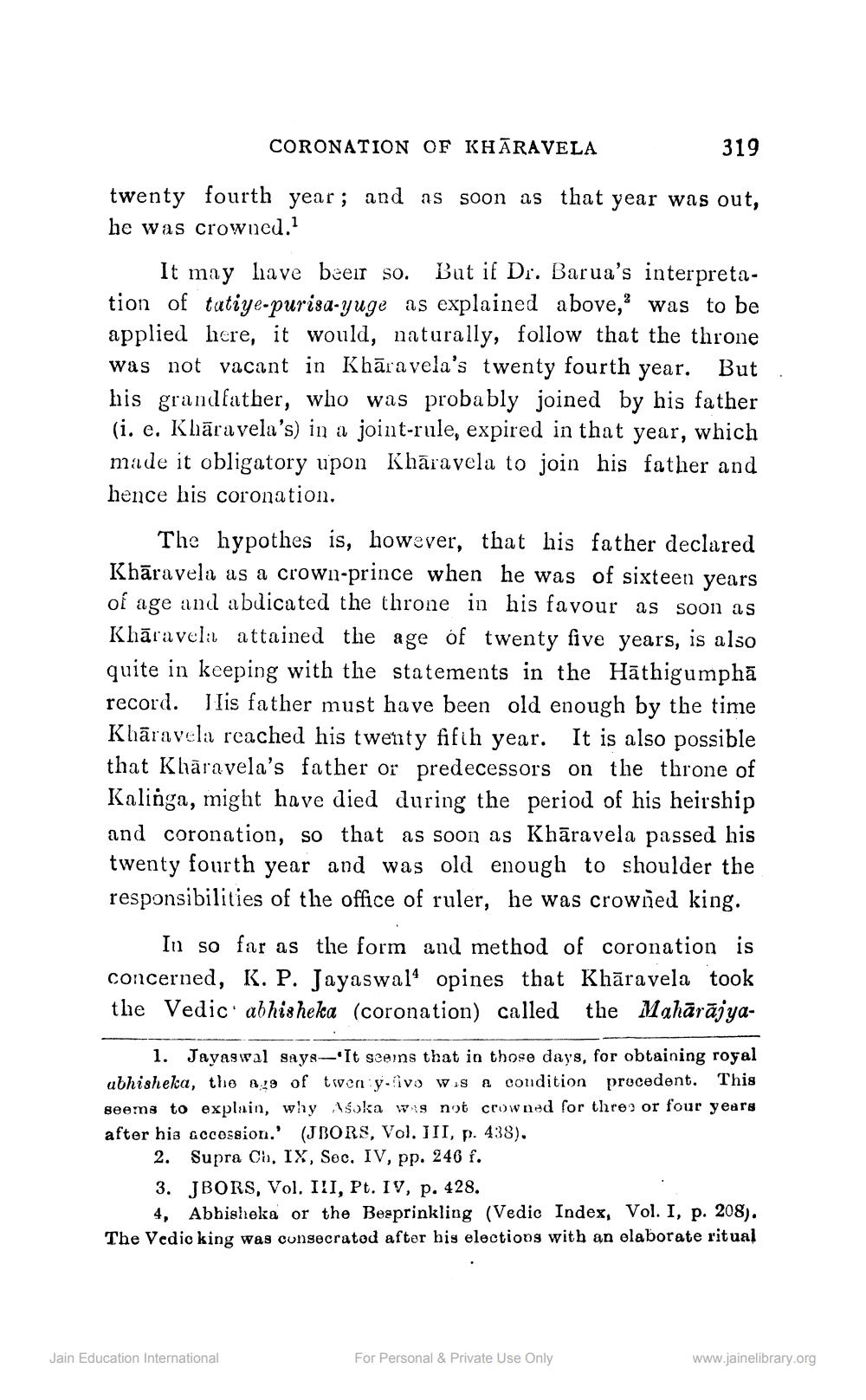________________
CORONATION OF KHĀRAVELA
319
twenty fourth year; and as soon as that year was out, he was crowned.'
It may have beeir so. But if Dr. Barua's interpretation of tutiye-purisa-yuge as explained above, was to be applied here, it would, naturally, follow that the throne was not vacant in Khāravela's twenty fourth year. But his grandfather, who was probably joined by his father (i. e. Klāravela's) in a joint-rule, expired in that year, which made it obligatory upon Khāravela to join his father and hence his coronation.
The hypothes is, however, that his father declared Khāravela as a crown-prince when he was of sixteen years of age and abdicated the throne in his favour as soon as Khāraveli attained the age of twenty five years, is also quite in keeping with the statements in the Hāthigumphā record. His father must have been old enough by the time Klāravela reached his twenty fifth year. It is also possible that Khāravela's father or predecessors on the throne of Kalinga, might have died during the period of his heirship and coronation, so that as soon as Khāravela passed his twenty fourth year and was old enough to shoulder the responsibilities of the office of ruler, he was crowned king.
In so far as the form and method of coronation is concerned, K. P. Jayaswalo opines that Khāravela took the Vedic. abhisheka (coronation) called the Mahārāj ya
1. Jayaswal says-'It seerns that in those days, for obtaining royal abhisheka, the Ale of twen y-fiva was a condition procedent. This seems to explain, wly Asoka wis not crowned for thre) or four years after his accossion.' (JBORS, Vol. III, p. 438).
2. Supra Ch, IX, Soc. IV, pp. 246 f. 3. JBORS, Vol. III, Pt. I9, p. 428.
4, Abhisheka or the Besprinkling (Vedic Index, Vol. I, p. 208). The Vedic king was consecratod after his elections with an elaborate ritual
Jain Education International
For Personal & Private Use Only
www.jainelibrary.org




